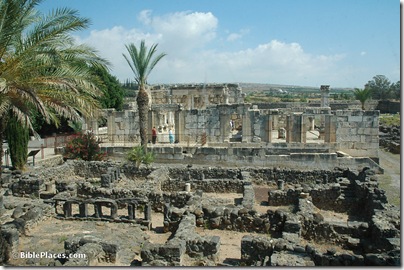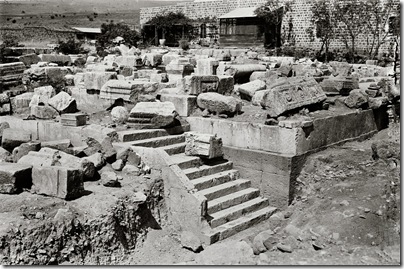Stonewatch/Arad Academy e.V. has announced the discovery of a proto-Sinaitic inscription in Timna, Israel, about 20 miles north of Eilat. The press release, via ANE-2:
The engraving, measuring ca. 12 x 16 cm, was found by "Stonewatch / Arad Academy e.V.", an institution based in Germany, that has been conducting surveys of rock art in Timna and worldwide for many years (www.stonewatch.de). Dr. Stefan Jakob Wimmer, an Egyptologist and ANE epigraphist at the University of Munich – who is not related to Stonewatch – is studying the engraving and working on a scholarly publication. He has preliminarily suggested to identify the writing as Proto Sinaitic: "… The right oval shows signs that are identical with characters of the Proto-Sinaitic script, and can in my view quite easily be read as a West Semitic personal name. In the left oval several signs will need more consideration. Some features of the inscription are especially remarkable: The suggested personal name in the right oval ends with the sign of a seated man. The adoption of a personal determinative has to my knowledge not been observed in other PS inscriptions, but is easily conceivable and should by no means contradict the identification of the inscription as PS. The upper character in the left oval could in my view be a variant of the image of the sun with two uraei protruding on either side, reduced to the uraei, and may shed light on a roughly similar sign in the Wadi el-Hol inscriptions. It will have to be examined if the oblong frames were inspired by cartouches. As an alternative one might think of stylised footprints…. The constellation of Egyptians and Semites in the context of mining activities is attested at two places: Serabit el-Khadim/Sinai, where almost all PS inscriptions were found (with the only exception until now of Wadi el-Hol near Luxor), and Timna. … The importance of the discovery of this inscription – if indeed Proto-Sinaitic – is obviously considerable. It is hoped that its common ground with the inscriptions from Serabit el-Khadim, and also Wadi el-Hol, and even more its new, variant features, may substantially contribute to the study of the early alphabet." We can add that the location of the inscription (which will not be disclosed until the necessary measures to protect the engraving from vandalism have been taken) corroborates a connection with the Egyptian copper mining activities at Timna. It is not, however, in close vicinity to the Hathor sanctuary. The possibility of a modern "hoax" can safely be excluded due to clear signs of erosion and the identical colour (patina) of the grooves with the stone surface. For more rock art from Timna including what may be other examples of yet undiciphered inscriptions, go to our free downloads:
http://stonewatch.de/free_downloads/special_cds/index.html (Catalogue of Rock Art in Southern Israel Timna Valley) Josef Otto
Stonewatch / Arad Academy e.V.
www.stonewatch.de
A photograph is available at http://www.stonewatch.de/Daten/Timna-1.jpg

